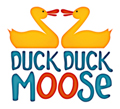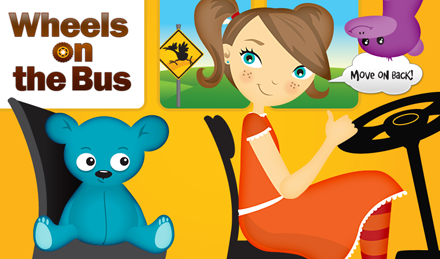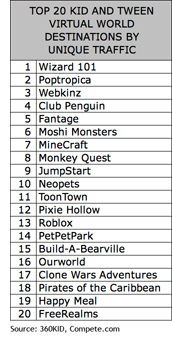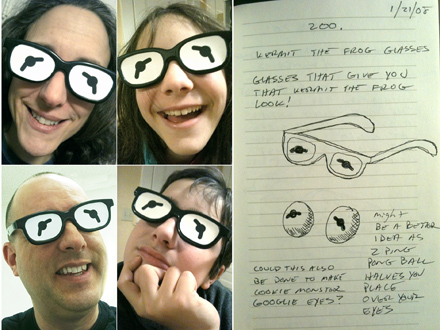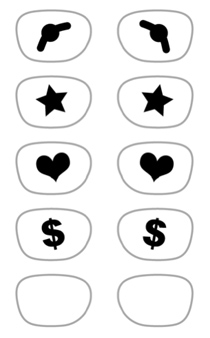Saturday, December 8th, 2012
[Wendy Smolen is a contributing writer to the KidScreen blog. She is also a friend and co-founder of the annual children’s conference called Sandbox Summit. Wendy asked if I would share with her Kidscreen followers a taste of my forthcoming virtual world report.]
Scott Traylor, head of 360KID, has spent the last few years playing every game he could get his hands on (I know, a tough job!). He’s just finished a comprehensive virtual world report, and I asked him to weigh in on the top 10 Tween Worlds. Download a sample page of the report here or contact Scott for the complete report or more virtual world insights.

Virtual world destinations for children sure have grown. Gone are the days of just Club Penguin and Webkinz. The past few years has seen an explosion of worlds, many specifically directed at kids under twelve. In the interest of assessing data on virtual worlds and MMOs specifically for children, I realized it’s important to follow all virtual worlds. In September, 2011 I had accumulated data for a total of 351 virtual worlds and MMOs. By September 2012, my list included 427 destinations.
When I sorted out the top ten virtual world destinations for tweens, some surprising trends emerged. This past September, the top 10 tween sites made up almost 50% of all virtual world and MMO traffic. Last year, only 36% of all traffic went to the same top ten. While the entire virtual world and MMO space grew 8.5% in that time period, the tween virtual world space grew almost 14%. The tween virtual world space is becoming increasingly stronger and more important.
What do these top worlds have that the others have missed? I have a few theories of my own:
1.) Find that secret sauce. Simply tying together a bunch of games will not do the trick. Find out what motivates your user base. Do kids in your target audience love horses? Or nurturing a pet? Maybe it’s all about sharing something creative with others. When you define one singular item, everything else will stem from that idea. Without it, your world will become just another virtual ghost town. Every successful world has something special. One great example is Club Penguin, where there are constant celebrations going on. What child doesn’t like to go to a party! Once you recognize parties are a driver, everything you do around that theme drives the engagement, including the games, custom costumes, even conversation.
2.) The real work begins after launch. Most new worlds fail within three to four months after launch. The initial peak in traffic is often followed by a giant decline. I see it over and over again with the data I’ve collected. “If you build it they will come” may be true at first, but if you don’t update it they will leave. Users constantly expect something fresh to be happening. New content needs to be added on a regular basis. While too many virtual world teams spend most of their development dollars getting to launch, the successful worlds spend half of their budget getting to launch, and the other half afterwards. Poptropica started with one island in 2007; 30 additional islands have been added to the world over time. Each island enriches the experience and keeps users coming back for more.
3.) Users know best. When I talk to people who work at the top ten virtual worlds, again and again they say: listen to your users. Many of the best improvements often come from players. And it’s not only important to listen, but to share that you have heard their suggestions. While it will probably be impossible to implement every idea, some may have the strength and validity to automatically rise to the top. Wizard101 solicits feedback from active users who have made a virtual purchase in the last 30 days. This sizable group has access to test realms and new content updates for two or three weeks in advance of them being posted to the entire community. During that time, they share feedback with the development team, offering real suggestions for increasing the engagement. And of course, feel empowered as loyal users.
As crowded as today’s virtual space is, it’s only going to get more so, before new worlds and ideas bubble to the top. Don’t jump in and expect things to be easy. You need to watch, learn, ask lots of questions, and, most importantly, play. Here’s hoping to see you on the top ten list next year.
Send comments to Scott (at) 360KID (dot) com or wendy (at) sandboxsummit (dot) org.


